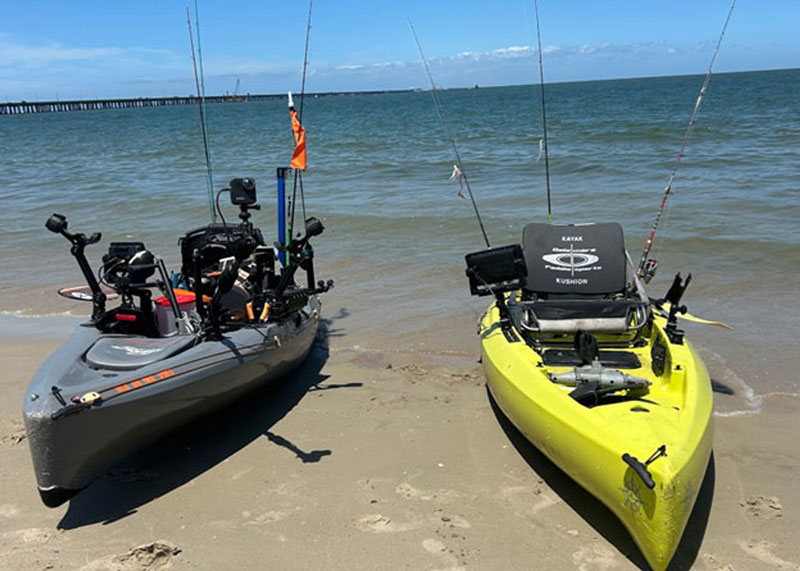Facing a current that leaves you at a standstill while paddling at Olympic levels makes for a tough day of kayak fishing. Same goes for getting stuck in a marsh with water falling so fast you’ll soon be aground. As a general rule of thumb, the farther south you are in the Chesapeake the stronger the flow and the larger the tidal swing will be. Wherever you’re headed, make sure to check the difference in water levels between high and low tide. Knowing how much the water level drops is imperative as many of the launches you’ll find throughout the Chesapeake may only be accessible during high tide. Knowing how swift the current will be can get a bit trickier as every area and every tidal cycle is different, but we still follow our general rule of thumb; the further south you go the stronger they’ll be. River currents can vary, too, due to rainfall levels. If I’m headed to an area I’ve never fished before, I do my best to get in contact with somebody local beforehand and get the lowdown on what the tides and currents are like. If you don’t know anyone near where you’d like to fish, call the closest tackle shop.

If you’re going to brave the marshes or open water of the Chesapeake, having a capable kayak is essential. Generally speaking, wide hulls will be more stable, while thinner hulls will cut through the water better. I have a 34” wide kayak and find it to be the sweet spot between stability and speed. Once you’re confident in your boat, the next step is knowing how you’ll get home if your main source of propulsion fails. Put simply, always have a full-sized spare paddle. Motors run out of batteries and pedal drives break, and if you’re a few miles from home in a two to three mph current, a half-paddle won't cut it. A handheld VHF radio and a day’s worth of food and water should also be joining you on your trip, just in case you manage to lose that spare paddle or get stuck in the marsh and need to wait it out or call for help.
As a rule of thumb, I check the wind and weather every hour and make sure to keep an eye on the wind direction while I fish. Conditions in areas with lots of open water and heavy current, like the CBBT, are extremely dependent on the wind direction. A 10-knot wind against the tide can create a nasty chop pretty quickly, while one with it can be fishable. It’s imperative to always keep in mind how far you are from shore, and if you’ll be able to get back in a safe amount of time if the wind switches. Keep an eye on the direction you need to paddle and do your best to ride the tides to and from the launch.
Areas like the ocean-side of Fishermans Island and the Eastern Shore marshes can produce tides strong enough that with a bit of wind in the wrong direction, you could find yourself at a standstill or swept out to open water. If you do end up in a situation where you’re unable to make it against the current, cut towards the closest piece of shoreline and beach your kayak until conditions are safe enough to get home. If you can’t make it to shore, it’s time to call for help and conserve energy. The worst situation you can put yourself in is one where you’re too exhausted to maintain control of your kayak.
Check the tides, check the weather, gear up, and bring a buddy who’s just as prepared as you are. Highly tidal areas can get difficult to deal with, but they can also produce some of the best fishing on Chesapeake Bay.
-By David Rudow